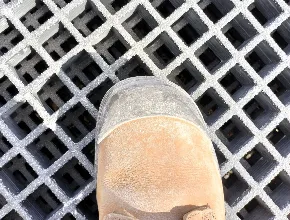loading...
- No. 9, Xingyuan South Street, Dongwaihuan Road, Zaoqiang County, Hengshui, Hebei, China
- admin@zjcomposites.com
- +86 15097380338
- Welcome to visit our website!
Exploring the Advantages and Applications of Fiber Reinforced Plastic Rods in Modern Engineering
Fiber Reinforced Plastic Rods Innovation in Material Science
Fiber reinforced plastic (FRP) rods are an innovative class of materials that combine the beneficial properties of plastics with the strength and durability of fibers. These rods have found widespread applications in various industries due to their superior performance characteristics, making them a popular choice for engineers and designers alike.
At the core of FRP technology is the combination of a polymer matrix with reinforcing fibers. The polymer, usually a thermosetting resin or thermoplastic, provides the structural integrity of the rod, while the fibers—commonly glass, carbon, or aramid—enhance its strength and stiffness. This synergy results in materials that are not only lightweight but also exhibit exceptional resistance to corrosion, fatigue, and various environmental factors.
One of the most significant advantages of FRP rods is their impressive strength-to-weight ratio. Compared to traditional materials like steel, FRP rods are much lighter, which simplifies handling and installation. This lightweight characteristic allows for easier transportation and is particularly beneficial in applications where weight is a critical factor, such as in aerospace and automotive industries. Engineers are increasingly turning to these materials to optimize performance while reducing energy consumption.
Corrosion resistance is another remarkable feature of FRP rods. Unlike metal, which can rust and degrade when exposed to harsh environments, FRP materials retain their mechanical properties over time, even when subjected to moisture, chemicals, and extreme temperatures. This resilience makes them ideal for applications in marine environments, chemical processing facilities, and infrastructure elements like bridges and rebar in concrete structures. They extend the lifespan of these constructions while minimizing maintenance costs.
fiber reinforced plastic rod

In terms of functionality, FRP rods can be tailored to meet specific requirements. The orientation, type, and amount of the reinforcing fibers can be adjusted during manufacturing to optimize the mechanical properties of the rods for specific applications. For instance, rods that require high tensile strength can utilize carbon fibers, while applications demanding flexibility might employ glass fibers. This versatility enables engineers to design solutions that are finely tuned to the unique demands of their projects.
Furthermore, the non-conductive nature of FRP rods presents a significant advantage in applications requiring electrical insulation. This property makes them useful in electrical and telecommunications industries, where insulating materials are essential to prevent short circuits and ensure safety. The ability to manufacture these rods in various colors and finishes also allows for aesthetic customization, enhancing their appeal in visible architectural applications.
The environmental impact of FRP materials is increasingly a topic of discussion as well. Many manufacturers are focused on sustainability, producing rods from recycled fibers and bio-based resins. This commitment to eco-friendly practices aligns with the global push for more sustainable materials and manufacturing processes.
As technology advances, we can expect further innovations in the development of fiber reinforced plastic rods. Research is ongoing in enhancing the performance characteristics of these materials, exploring new applications, and improving recycling methods. The future of FRP technology looks promising, with the potential to transform traditional industries and pave the way for new, sustainable practices.
In conclusion, fiber reinforced plastic rods represent a significant advancement in material science. Their impressive strength-to-weight ratio, corrosion resistance, customization capabilities, and non-conductive properties make them an increasingly popular choice across numerous industries. As the market for composite materials continues to grow, FRP rods are well-positioned to play a crucial role in shaping the future of construction, engineering, and design. The ongoing innovation in this field will undoubtedly lead to more efficient, sustainable, and effective solutions for complex challenges.
-
The Rise of FRP Profiles: Strong, Lightweight, and Built to LastNewsJul.14,2025
-
SMC Panel Tanks: A Modern Water Storage Solution for All EnvironmentsNewsJul.14,2025
-
GRP Grating: A Modern Solution for Safe and Durable Access SystemsNewsJul.14,2025
-
Galvanized Steel Water Tanks: Durable, Reliable, and Ready for UseNewsJul.14,2025
-
FRP Mini Mesh Grating: The Safer, Smarter Flooring SolutionNewsJul.14,2025
-
Exploring FRP Vessels: Durable Solutions for Modern Fluid HandlingNewsJul.14,2025
-
GRP Structures: The Future of Lightweight, High-Performance EngineeringNewsJun.20,2025
